Vernon Homeowners: Install a Pollinator Garden This Spring
Quick Guide: Creating Your Pollinator Garden
- Pollinator gardens provide food, water, shelter, and nesting sites for bees, butterflies, and other beneficial insects.
- Focus on native plants adapted to Ottawa's climate (Zone 5a/b) for best results and lower maintenance.
- Plan for blooms throughout spring, summer, and fall.
- Site selection (sun exposure), soil preparation (add compost!), and proper planting are key.
- Maintenance involves minimal "tidying" – leave stems and leaves in fall/winter for habitat.
- Even small spaces (planters, small beds) make a difference!
Ready to transform your yard? Request a quote from Clean Yards today!
Introduction: Buzzing with Potential! Why Your Vernon Yard Needs a Pollinator Garden
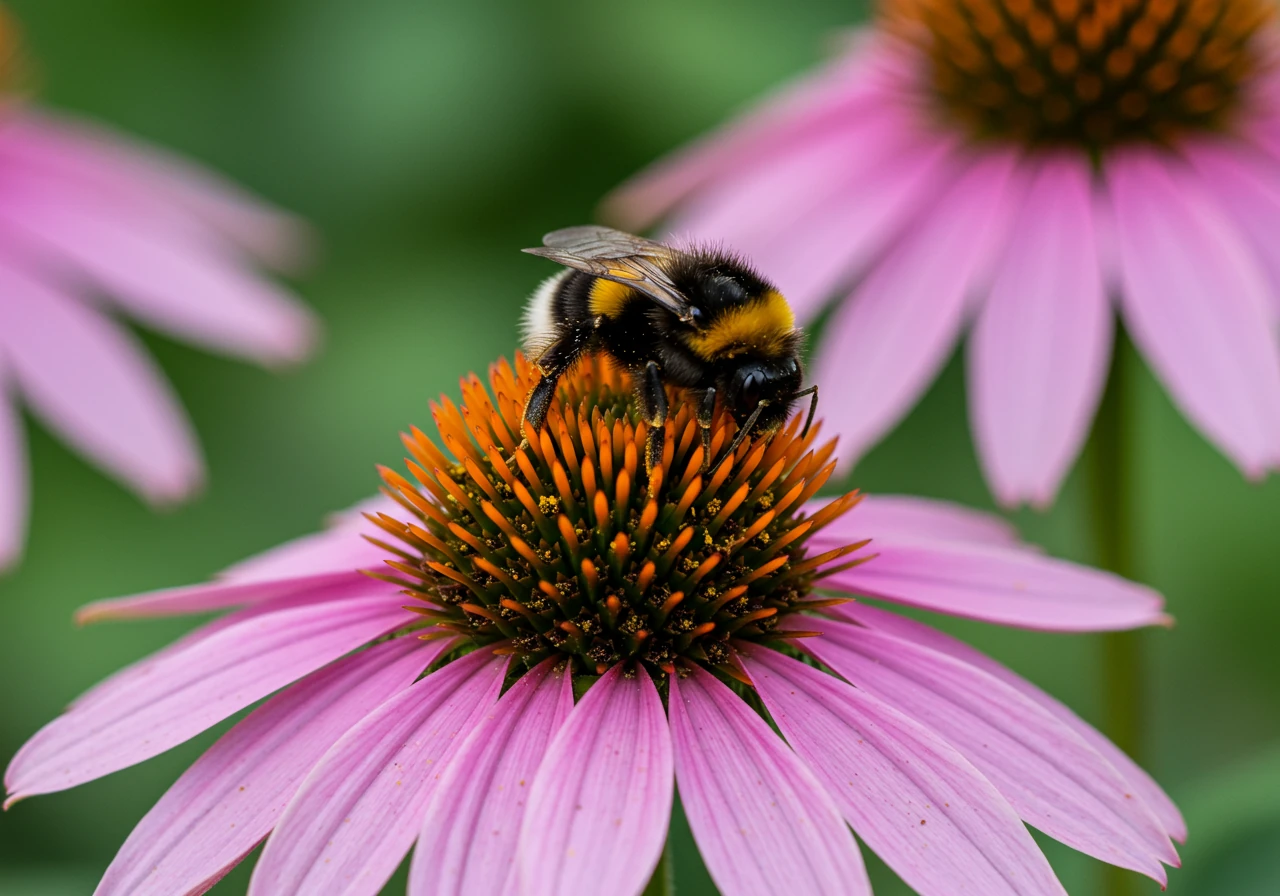
Hello Vernon neighbours! As the snow finally retreats across the wider Ottawa region, thoughts naturally turn to our yards and gardening plans. This spring, why not try something truly special – a pollinator garden? Now, you might be thinking, "Pollinators? Aren't those just bees buzzing around?" Well, yes, but they (along with butterflies, moths, and even some beetles!) are nature's unsung heroes. Think of them as the tiny, very important delivery drivers essential for growing many fruits, vegetables, and keeping our local Vernon ecosystem vibrant and healthy. Without them, our plates and landscapes would look much less interesting!
Creating a haven for these vital creatures right in your own backyard is a fantastic spring landscaping project, and it's more achievable than you might imagine! It's definitely not about turning your entire lawn into a wild jungle (unless that's your style!). Even dedicating a small garden bed, adding specific native plants to existing flower borders, or using strategically placed planters filled with the right blooms can make a huge impact. Imagine your yard buzzing softly with life, bursting with colourful flowers that attract beautiful butterflies and beneficial bees – adding beauty and serious curb appeal. Plus, many pollinator-friendly plants are hardy and well-suited to our Vernon climate, potentially even reducing your watering and maintenance chores down the road. Let's make our lovely corner of the region, from here to nearby Osgoode and beyond, a welcoming spot for these essential critters! Need help getting started? Clean Yards is nearby, check out our Google My Business page for reviews and location.
What Exactly *Is* a Pollinator Garden? (Hint: It's More Than Just Pretty Flowers!)
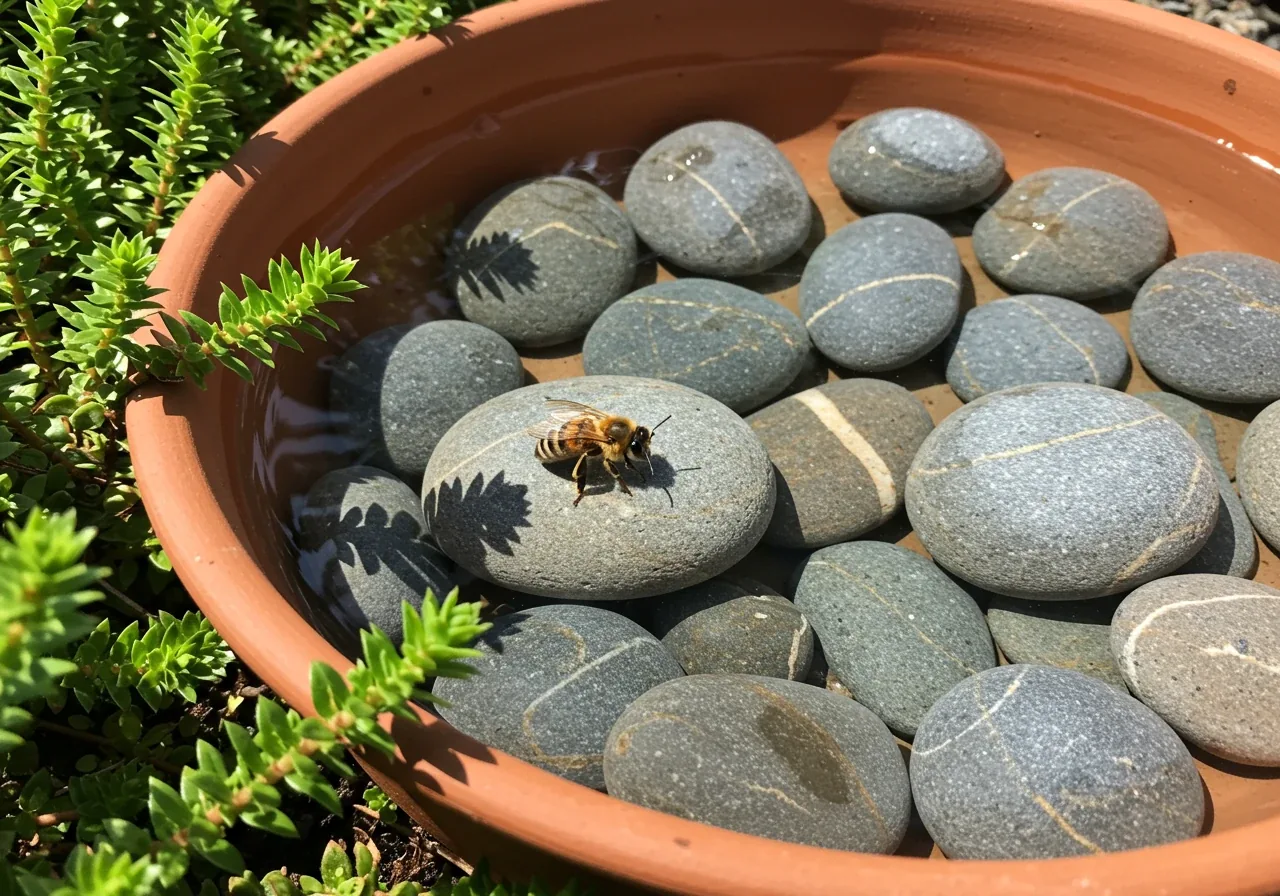
Okay, so you're intrigued by the buzz (pun intended!) around pollinator gardens. But what exactly makes a garden "pollinator-friendly"? Is it just a fancy term for a patch of colourful flowers? Nope, there's a bit more to it, but don't worry, it's fascinating stuff and easier than you might think!
Think of a pollinator garden less like a traditional, purely decorative landscaping feature and more like a welcoming habitat specifically designed for bees, butterflies, hummingbirds, moths, and other helpful critters. While beautiful blooms that boost your curb appeal are certainly part of the picture, the main goal is function: creating a complete support system for these essential workers of our local ecosystem.
A true pollinator garden provides four key ingredients:
- Food Source: Think continuous buffet, not a single feast! This means planting a variety of mostly native plants that offer nectar and pollen through different seasons – from early spring right into the fall. Different pollinators are attracted to different flower shapes, sizes, and colours, so diversity is your friend. Getting this right involves understanding plant lifecycles in spring to ensure blooms are available when needed.
- Water Source: Even tiny creatures get thirsty! A shallow dish filled with pebbles, marbles, or even just mud allows pollinators to land safely and take a sip without the risk of drowning. Bird baths are often too deep.
- Shelter: A safe haven from bad weather and predators. This can be provided by dense plantings, leaving some leaf litter or dead plant stems over winter, or even adding small rock piles or logs.
- Nesting & Larval Host Sites: Places to raise the next generation. This includes specific "host plants" that caterpillars need to eat (like milkweed for Monarch butterflies!) and undisturbed patches of soil, dead wood, or hollow stems where different types of bees can nest.
So, how does this differ from typical gardening? While traditional gardens often prioritize visual appeal and might use popular cultivars that offer little pollen or nectar, a pollinator garden focuses on ecological function. It emphasizes native plants adapted to our Ottawa climate (like those thriving in Vernon or Greely) and generally avoids pesticides that harm beneficial insects. The maintenance approach is also slightly different; for example, being mindful during essential Ottawa winter prep for your garden beds can help protect overwintering pollinators. Careful planning also avoids issues later, like those covered when designing your garden layout this spring.
The fantastic news is that pollinator gardens are incredibly adaptable. You don't need a massive yard! Someone in Barrhaven might create a vibrant pollinator haven using several large planters on a balcony, while homeowners in more spacious areas like Vernon or Osgoode might dedicate a whole garden bed or border. Keeping everything healthy requires consistent effort, including applying good preventative care during summer. And if setting it all up sounds like a bit much, remember there are professional landscaping services that can help design and install the perfect pollinator paradise for your specific space, including specialized garden installation.
Exploring Plant Types for Pollinators
Hardy Native Perennials
These are the backbone of a successful Ottawa pollinator garden. They return year after year and are perfectly adapted to our climate. Examples include:
- Purple Coneflower (Echinacea purpurea)
- Bee Balm (Monarda fistulosa)
- Black-Eyed Susan (Rudbeckia hirta)
- Common Milkweed (Asclepias syriaca) - Crucial for Monarchs!
- New England Aster (Symphyotrichum novae-angliae)
Choosing a variety ensures blooms from spring to fall. Learn more about material selection including plants.
Beneficial Shrubs
Shrubs can provide structure, shelter, and early or late-season blooms. Consider native options like:
- Serviceberry (Amelanchier spp.) - Early spring flowers, edible berries.
- Elderberry (Sambucus canadensis) - Large flower clusters, berries for birds.
- Meadowsweet (Spiraea alba) - Mid-summer white flower spikes.
- Pussy Willow (Salix discolor) - Very early pollen source for bees.
Shrubs often form part of larger landscape transformations.
Easy-Grow Annuals
While native perennials are key, some annuals can supplement nectar sources and add quick color, especially in containers or new beds:
- Zinnias (choose single-petal varieties)
- Cosmos
- Sunflowers (non-pollenless varieties)
- Alyssum
Annuals are often incorporated into seasonal garden maintenance routines.
The Sweet Rewards: Benefits for You, Your Garden, and Ottawa's Ecosystem
Benefits for You (The Gardener Extraordinaire!)
First off, let's talk curb appeal. Imagine vibrant native plants bursting with colourful flowers all season long, attracting graceful butterflies and the gentle hum of busy bees. It’s living art right outside your window, adding beauty and value to your home. Seriously, you can see some stunning examples of how well-planned gardens enhance properties by looking at these beautiful yard makeovers. If you happen to grow fruits or vegetables (even just a few tomato plants in pots!), pollinators are your absolute best friends. They are essential for good yields, meaning more berries for your breakfast or bigger pumpkins for fall! Plus, many native plants suited for pollinator gardens are surprisingly low-maintenance once established. They're often drought-tolerant and adapted to our local conditions, meaning less watering and fussing for you. Who doesn't appreciate a garden that works with you, not against you?
Benefits for Your Garden (A Tiny Ecosystem Thrives!)
Think of pollinators and the other beneficial insects they attract as your garden's personal security team. Ladybugs love aphids, predatory wasps target caterpillars – many critters drawn in by your pollinator flowers will help keep pest populations in check naturally. This means you can often rely less on chemical interventions, leading to a healthier overall garden environment. It's a fantastic win-win: more beautiful blooms, fewer pesky bugs munching on your prize-winning petunias! A well-designed pollinator patch contributes to richer soil and a more resilient mini-ecosystem right in your yard. Keeping the whole area healthy supports this balance; periodic tidying, like what a seasonal garden cleanup in Metcalfe provides, can help manage the space effectively while being mindful of overwintering beneficials. Similar services are available for Marionville garden clean up and Ottawa garden clean up too.
Benefits for Ottawa's Ecosystem (Your Local Impact!)
This is where your small patch makes a truly big difference! Your gardening efforts become a vital stepping stone, creating a miniature refuge and food stop that helps connect fragmented habitats across Ottawa and surrounding communities like Manotick or Richmond. Even a small pollinator garden bed provides essential food and shelter for bees, butterflies, and other critters whose populations are facing challenges. By planting appropriately, you're actively supporting local biodiversity. Healthy pollinator populations are crucial for the wider environment, supporting everything from the apple orchards outside the city to the wildflowers blooming along the Rideau River. It’s a simple act of landscaping with purpose. If prepping the space feels like a big job, remember help is available for general Ottawa property cleanup services or more extensive city property cleanup. Even just getting help with the initial setup or seasonal tidying, like the Vernon yard cleanup service offers, can make launching your pollinator haven much easier. And of course, if you're dreaming bigger and need assistance shaping your overall landscaping vision, exploring professional landscaping and cleanup services is always a great option. Consider also Metcalfe property cleanup or Marionville property cleanup if you're in those areas.
Adding a pollinator garden is truly an investment that pays you back in beauty, potential bounty, and the satisfaction of making a positive ecological contribution! You can learn more about our commitment to quality work and customer satisfaction by reading about us.
Why Pollinators Need Our Help (Illustrative Data)
Habitat loss and other factors have impacted pollinator populations. Creating gardens helps!
Planning Your Pollinator Paradise: Sun, Soil, and Site Selection in the Ottawa Area
Okay, you've decided to create a pollinator paradise – fantastic! Before you rush out to buy every colourful plant you see (trust us, the temptation is real!), let's talk strategy. Getting the site selection right is like laying a strong foundation for a house; it makes everything that follows much easier and more successful. Think of this as the fun planning phase – grabbing a coffee, maybe a notepad, and doing a little detective work in your own yard.
Let the Sun Shine In (Or Not *Too* Much!)
First up: sunshine! Most pollinator-friendly flowers are sun-worshippers, needing at least 6 hours of direct sunlight per day to really thrive and produce the nectar pollinators crave. Spend a day (or even just a sunny morning and afternoon) watching how the light moves across your yard. Where are the sunniest spots? Are there areas that get lovely morning sun but afternoon shade, or vice versa? This is crucial information because it dictates which native plants will be happiest where. Don't worry if you don't have a full-sun location; many beautiful pollinator plants do well in part-shade too, we just need to plan accordingly! Keep track of potential locations – maybe that sunny spot near the mailbox, or a patch along the back fence.
Size Matters (But Small is Mighty!) & Location, Location, Location
How big should your pollinator garden bed be? Honestly, any size helps! You could start with a few containers on your patio in Barrhaven or dedicate a significant border in a larger yard out in Manotick. The key is to start with a size you feel comfortable managing. It's often better to start small and expand later than to get overwhelmed. Consider visibility too – will you be able to enjoy the butterfly show from your window? Also, think about wind. Is the spot sheltered, or is it a wind tunnel? Very exposed sites might need tougher plants or a small windbreak (like a strategically placed shrub or trellis). Good drainage is also important; most pollinator plants don't like sitting in soggy soil. Avoid low spots where water tends to pool after rain. If you're carving out a new bed from lawn or tackling a weedy patch, getting the area prepped is key. Sometimes a thorough initial clear-out makes all the difference, something a City Garden Clean Up Service can expertly handle, whether it's in the core or requires a specialized City Yard Cleanup Service.
Digging into Ottawa Soil (Literally!)
Ah, soil. The stuff gardens are made of! Ottawa area soils can be a real mixed bag. You might have heavy clay (hello, Greely!), sandy soil that drains like a sieve, or rocky terrain common in parts of Nepean. Finding out what you have is easier than you think. Grab a handful of moist (not soaking wet) soil and give it a squeeze. Does it form a sticky ball that holds its shape (clay)? Does it feel gritty and fall apart easily (sand)? Or does it feel slightly crumbly and hold together loosely (loam – the jackpot!)? Understanding your soil type helps you choose plants that will naturally do well or know what amendments are needed.
The good news is that almost any soil can be improved! Adding organic matter like compost is the single best thing you can do. Compost helps break up heavy clay, improves water retention in sandy soil, and adds vital nutrients. Don't skimp on soil prep – healthy soil equals happy plants and happy pollinators. Remember, transforming even tricky spots is possible; you can see incredible examples of challenging sites turned beautiful on pages showcasing successful garden transformations.
Considering Our Climate
Ottawa sits squarely in Plant Hardiness Zone 5a/5b. This just means we need to choose plants tough enough to survive our chilly winters and make the most of our distinct growing season. Selecting native plants or hardy cultivars adapted to Zone 5 is crucial for long-term success and lower maintenance. For more insights into regional planting, check out resources like the Ontario Grow Me Instead Guide or the Ottawa Wildflower Seed Library.
Planning might seem like a lot, but getting these basics right – sun, site, and soil – sets your pollinator garden up for buzzing success. And if the thought of digging, amending soil, and planting feels daunting, remember that professional help is available for everything from site prep to full Garden Installation. Before finalizing big landscaping plans, it's also wise to be aware of any local guidelines or best practices; responsible gardening includes understanding resource use and how personal information might be handled if using online planning tools – you can see our commitment to data protection in our Clean Yards Privacy Policy. Now, let’s get ready to choose some plants!
Plant Power! Choosing the Best Native & Pollinator-Friendly Plants for Ottawa Gardens
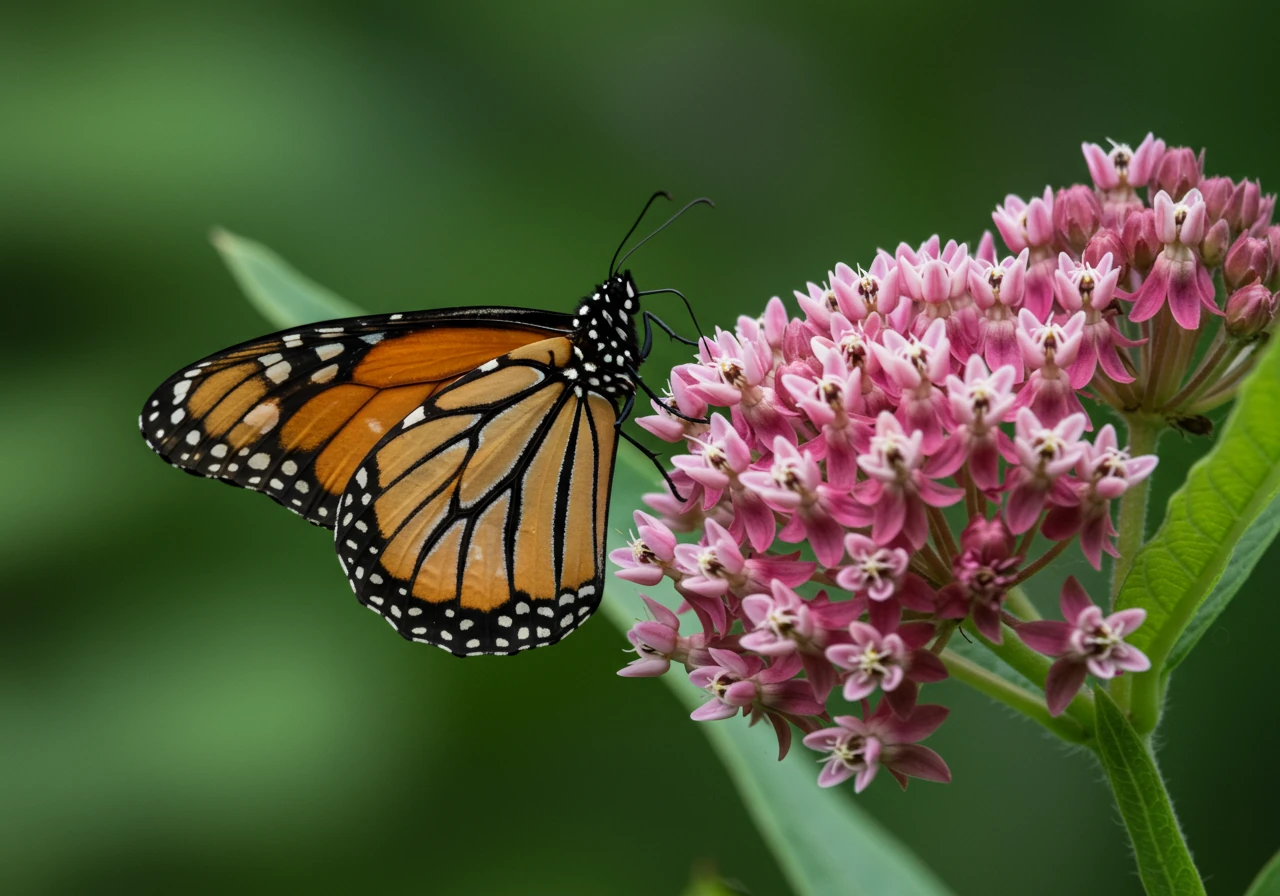
Alright, garden planners, let's get to the really fun part – choosing the plants! You've picked your sunny spot, considered your soil (even if it's that classic Ottawa clay!), and now it's time to roll out the welcome mat for our buzzing buddies. Choosing the right plants is key to creating a pollinator haven that truly thrives in our unique climate (hello, Zone 5a/b!).
Why Go Native? Meet Your Local Superstars!
While those colourful exotic flowers at the garden centre can be tempting, focusing on native plants is like choosing the home team – they're already adapted to our Ottawa weather, from snowy winters to humid summers. Think of it this way: native plants and local pollinators grew up together! They have a long-standing relationship. Native plants provide the specific types of nectar, pollen, and leaves that our local bees, butterflies, and other beneficial insects need to survive and reproduce. Plus, because they're suited to our soil and rainfall patterns, native plants often require less watering, less fertilizer, and generally less fussing once established. That means more time enjoying the butterflies and less time battling garden chores! It’s smart gardening that supports our local ecosystem.
Keep the Buffet Open: Aim for Blooms All Season Long!
Imagine going to a party where all the food is put out at 6 PM and gone by 6:30 PM. Not ideal, right? Pollinators feel the same way! To keep them happy and visiting your garden from early spring thaw right through to the crisp days of fall, you need a diversity of plants that bloom at different times. Aim for at least three different species blooming in each period: spring, summer, and fall. Variety in flower shapes and colours is also great, as different pollinators are attracted to different types of blooms.
Ottawa's Pollinator All-Stars: Some Native Plant Ideas
Ready for some suggestions perfect for gardens from Nepean to Greely? Here are a few reliable native bloomers for our area:
- Early Spring Risers:
- Wild Geranium (Geranium maculatum): Lovely pinkish-purple flowers, adaptable.
- Wild Columbine (Aquilegia canadensis): Unique red and yellow bell-like flowers, attracts hummingbirds.
- Foamflower (Tiarella cordifolia): Great for shadier spots, delicate white flower spikes.
- Mid-Summer Showstoppers:
- Common Milkweed (Asclepias syriaca): THE essential host plant for Monarch butterfly caterpillars! Plus, fragrant pink flowers bees adore. (Butterfly Milkweed, Asclepias tuberosa, with bright orange flowers, is another great native choice).
- Bee Balm / Wild Bergamot (Monarda fistulosa): Purple pom-pom flowers; a magnet for bees and hummingbirds.
- Purple Coneflower (Echinacea purpurea): Hardy, daisy-like purple flowers that provide nectar in summer and seeds for birds in fall.
- Fall Finales:
- New England Aster (Symphyotrichum novae-angliae): Vibrant purple flowers, crucial late-season nectar source.
- Canada Goldenrod (Solidago canadensis): Bright yellow plumes – don't blame these for allergies (that's usually ragweed!), pollinators love them.
- Sneezeweed (Helenium autumnale): Cheerful yellow, daisy-like flowers that bloom late.
Native vs. Non-Native: What's the Big Deal?
Think of it like this: Native plants offer pollinators a full, nutritious meal – the right pollen, nectar, and leaves for caterpillars. Many popular non-native ornamentals, while pretty, might only offer a sugary snack (nectar) but lack the right pollen or aren't suitable host plants. Some highly cultivated varieties might even produce very little nectar or pollen at all! While some non-natives can be part of a pollinator garden (like annual zinnias or cosmos), prioritizing natives gives you the biggest ecological bang for your buck. Before you plant, ensure the designated area is properly prepared. A thorough clearing of weeds and old debris makes a huge difference – utilizing an Ottawa yard cleanup service can give you that perfect blank slate.
Where to Find These Gems?
Look for local nurseries specializing in native plants (a quick online search for "native plant nursery Ottawa" helps!). Plant sales hosted by conservation authorities or horticultural societies are also great sources. Some larger garden centres are improving their native plant sections, but always check the labels carefully. Avoid digging plants from the wild, as this can harm natural populations. If you're replacing a chunk of lawn to create your garden bed, remember that dealing with the removed turf effectively is important; for larger lawn projects elsewhere in your yard, you might consider professional sod installation services in Ottawa.
Feeling overwhelmed by the choices or need help designing the perfect layout? Don't hesitate to reach out for personalized landscaping advice. We're happy to help you select the best plants for your specific site. Once you submit your request, you'll land on our straightforward simple thank you page, confirming we've got your message. Happy planting!
Let's Get Planting! A Step-by-Step Guide to Installing Your Garden
Okay, you've planned your pollinator paradise, picked out some amazing native plants, and you're practically buzzing with excitement (see what I did there?). Now comes the fun part – getting those plants into the ground! Don't worry, this isn't rocket science, more like playing in the dirt with a purpose. Here’s your step-by-step guide to installing your beautiful new garden bed in Ottawa, structured as a timeline:
Step 1: Clear the Decks (and the Weeds!)
First things first, we need a clean slate. If you're converting a patch of lawn, remove the grass (dig or sheet mulch). Got a seriously overgrown spot? Consider a professional City Property Cleanup Service or an Ottawa Garden Clean Up Service for existing beds.
Step 2: Give the Soil Some Love
Loosen earth 20-30 cm deep. Mix in generous amounts of compost or manure. This improves drainage and adds nutrients. Proper Soil Preparation is crucial for success.
Step 3: Plant Placement Party!
Arrange potted plants on the prepared bed. Consider final size, height (taller in back/center), and spacing. Adjust positions now – it's easier than replanting!
Step 4: Dig In and Get Planting
Dig holes twice as wide as pots, same depth. Gently remove plants, tease roots if needed. Place plant level with soil surface. Backfill with amended soil, firm gently.
Step 5: Water, Water, Water!
Water new plants deeply right away at the base. This settles soil and reduces transplant shock.
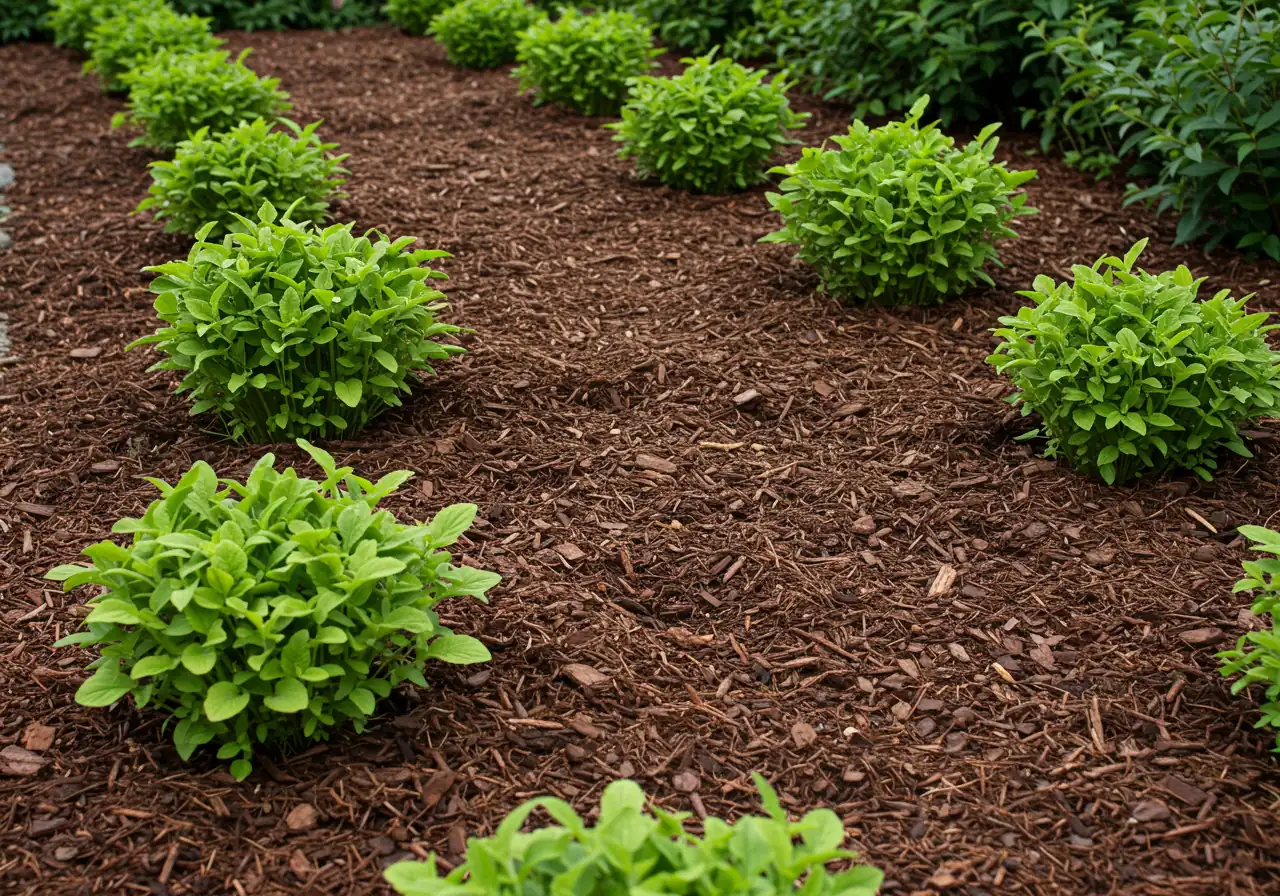
Step 6: Tuck Them In with Mulch
Apply a 5-7 cm (2-3 inch) layer of organic mulch (shredded bark, wood chips). Keep mulch slightly away from plant stems. Mulching is key for moisture retention and weed suppression. Learn more about mulching and edging techniques. If the whole yard needs attention, consider general Property Clean Up services.
There you have it! Your pollinator garden is installed. Now, keep it watered, watch for tiny visitors, and enjoy the beautiful results of your gardening efforts!
Keeping the Buzz Alive: Maintaining Your Ottawa Pollinator Garden Through the Seasons
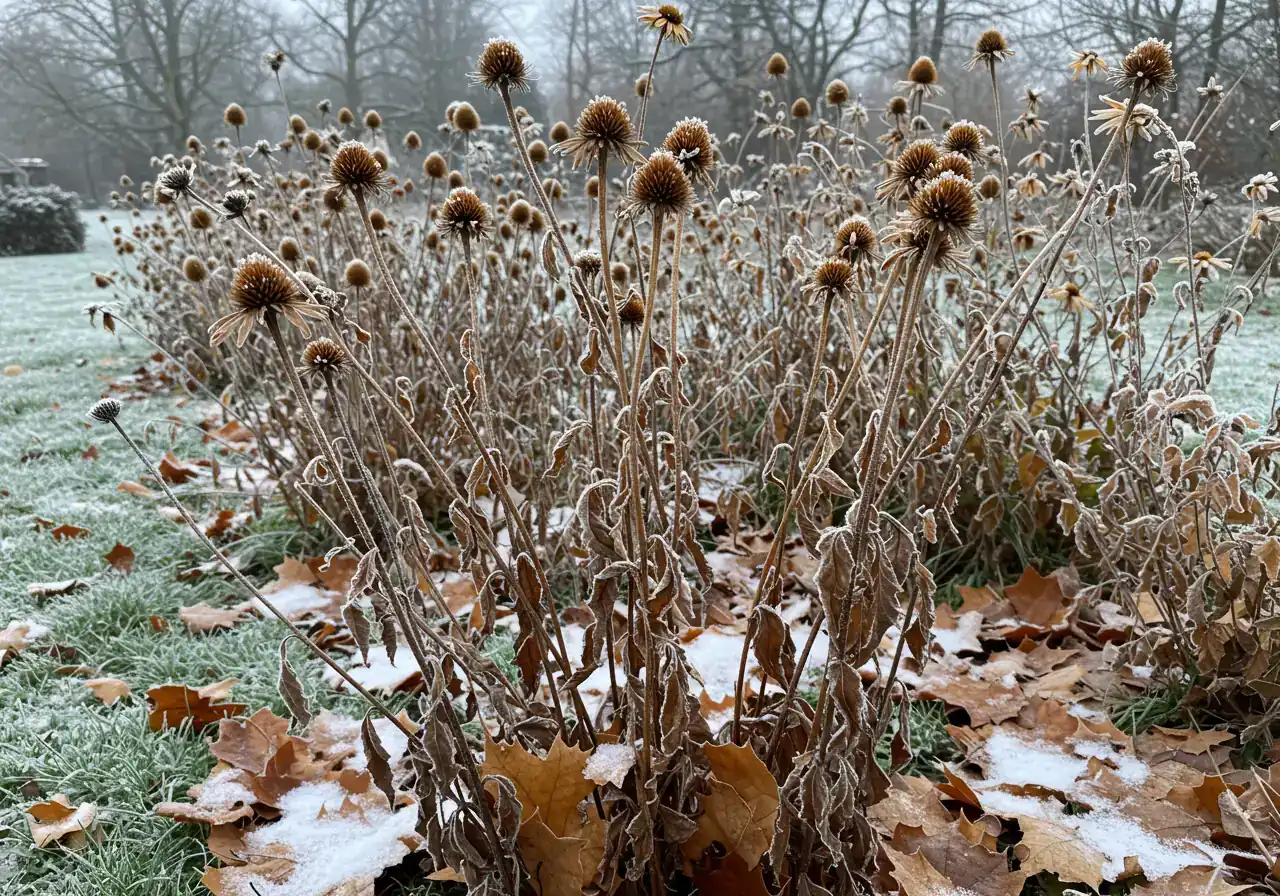
Congratulations, your pollinator garden is planted! It looks fantastic, and maybe you've already spotted a few tiny visitors checking out the new buffet. But like any successful relationship (especially one involving busy bees!), a little ongoing care goes a long way. Maintaining your pollinator haven through Ottawa’s dramatic seasons isn't complicated, especially if we focus on working with nature, not against it. Think less "manicured perfection" and more "gently guided wildness." Here’s how to keep the good vibes buzzing year-round:
Spring Awakening:
As the snow melts (finally!) and your garden starts waking up, resist the urge to tidy everything immediately. Many beneficial insects overwinter in hollow stems and leaf litter.
- Gentle Cleanup: Wait until temperatures are consistently above 10°C before cutting back *all* of last year's stems. Leave stems 15-30 cm high for cavity-nesting bees. Rake leaves gently.
- Weed Watch: Tackle weeds early. Identify native seedlings!
- Mulch & Edge: Refresh mulch if needed. Ensure neat edges for a polished look.
Summer Sizzle:
This is peak season! Your main jobs are watering wisely and observing.
- Water Wisely: Water deeply, less frequently. Check soil moisture first. Established natives are often drought-tolerant.
- Observe & Enjoy: Watch visitors! Note popular flowers. Add a shallow water source using appropriate landscape materials.
- Pest Patrol (Eco-Style): Avoid pesticides! Attract beneficials. Use water spray or squish aphids. Some leaf chewing is normal (caterpillars!).
- Deadheading (Optional): Snipping spent flowers encourages more blooms, but leave some seed heads for birds.
Fall Farewell & Winter Prep:
Okay team, this is where pollinator gardening really differs from traditional maintenance. Put down the rake (mostly)!
- Leave the Leaves! Fallen leaves provide crucial insulation and habitat. Rake them *into* garden beds if needed.
- Don't Cut Everything Back: Leave sturdy stems for nesting bees and seed heads for birds. Embrace winter interest! If tidiness is essential, consider selective cleanup or help from a Metcalfe yard cleanup service or Marionville yard cleanup service for larger areas.
- Plant Spring Bulbs: Plant crocuses, snowdrops, etc., for early nectar next year.
Winter Respite:
Your garden (and you!) deserves a rest.
- Let It Be: Enjoy the winter structure providing shelter.
- Plan Ahead: Dream about next year. What thrived? What needs adjusting?
Your Seasonal Checklist:
Consider jotting down these tasks: Early Spring (gentle cleanup, weed watch, mulch check), Late Spring/Early Summer (planting, watering starts), Mid-Summer (observe, water wisely, eco-pest patrol), Fall (leave leaves/stems, plant bulbs), Winter (rest, plan).
By following these seasonal tips, you’ll ensure your Ottawa pollinator garden remains a thriving, low-maintenance haven that supports our local ecosystem for years to come! Need consistent help? Explore City Garden Maintenance Services.
Top 5 Native Plant Picks for Ottawa Pollinators
Choosing native plants for your Ottawa garden is like rolling out the red carpet for local pollinators! Here are five all-stars:
- Common Milkweed (Asclepias syriaca)
Why it Rocks: Essential Monarch host plant! Fragrant pink flowers are bee magnets, supporting the local ecosystem. - Purple Coneflower (Echinacea purpurea)
Why it Rocks: Classic beauty! Summer nectar for bees/butterflies, fall seeds for birds. Drought-tolerant, adds curb appeal. Consider Garden Maintenance Plans for ongoing care. - Wild Bergamot / Bee Balm (Monarda fistulosa)
Why it Rocks: Action magnet! Purple pom-poms attract bees, butterflies, hummingbirds. Great summer show. Thinking of a big planting? See Our Estimate Feedback for project insights. - New England Aster (Symphyotrichum novae-angliae)
Why it Rocks: Late-season hero! Vibrant purple blooms provide crucial fall nectar. Need help clearing the spot? A City Yard Cleanup Service can help. - Wild Columbine (Aquilegia canadensis)
Why it Rocks: Elegant early bloomer! Unique red/yellow flowers attract hummingbirds/long-tongued bees. Prefers part shade. Understand service scope with our Service Terms and Conditions.
Incorporating even a few of these native plants into your landscaping makes a real difference for Ottawa's pollinators!
FAQs: Your Ottawa Pollinator Garden Questions Answered
Absolutely! The key is choosing plants rated for Ottawa's hardiness Zone 5a/b. Native plants are your best bet – they’ve evolved alongside our frosty winters and hot summers. Think tough cookies like Coneflowers, Bee Balm, and Asters. They know how to handle a little (okay, a lot of) snow and come back swinging in the spring. Just ensure good drainage so they don't sit in icy water!
You bet! Clay soil is common around Ottawa, but don't let it stop your gardening dreams. Many native plants, like Cup Plant or Joe-Pye Weed, actually tolerate clay quite well. The best long-term strategy is to amend your garden bed by mixing in lots of compost each year. This improves structure and drainage over time, making your plants – and the pollinators – very happy. It’s certainly better than fighting with struggling lawn care on clay soil.
Finding true native plants is easier than you might think! Look for local nurseries specializing in Ontario natives (a quick search often points you near areas like Manotick or Richmond). Conservation authority plant sales (like from Rideau Valley Conservation Authority) and local horticultural society events are also fantastic sources. Check labels carefully at larger garden centres, as their "native" sections can vary. Just remember, please don't dig plants from the wild!
It's a common worry, but generally unfounded! Most native bees are gentle and focused on collecting pollen and nectar from flowers, not bothering people. You'll attract a diversity of pollinators, not just wasps. While wasps are also pollinators, they are more often attracted to picnics than garden beds. Providing the right habitat usually means beneficial insects are too busy working your native plants to cause trouble.
It’s different work, not necessarily no work! Initially, weeding and watering are key as plants establish. Long-term, native plants need less fuss, but maintenance involves less "tidying" – leaving stems and leaves for winter habitat is crucial for the ecosystem. If the seasonal tasks feel overwhelming, especially on larger properties, getting help from a Metcalfe property cleanup service for fall prep or a Marionville yard cleanup service for spring kick-start can be ideal. For regular upkeep, consider options like a city garden maintenance service.
Conclusion: Ready to Make Vernon (and Ottawa) Bloom?
So, feeling inspired to roll up your sleeves and create a little slice of pollinator paradise right here in Vernon? We hope so! We've covered the why (supporting our vital little ecosystem buddies), the what (more than just pretty flowers!), and the how (planning, picking awesome native plants, planting, and keeping things buzzing with gentle maintenance).
Creating a pollinator garden is a fantastic gardening project that offers so much reward. Think gorgeous blooms adding serious curb appeal, the satisfaction of helping nature thrive, and potentially even less yard work down the line thanks to hardy native plants. Whether you have space for a large garden bed in Osgoode or just a few sunny planters on a deck in Barrhaven, every little bit helps create a friendlier environment for our essential pollinators across the wider Ottawa region.
Feeling the buzz but maybe a tad overwhelmed by the landscaping possibilities? Don't let that stop you! The team at Clean Yards is passionate about creating beautiful, functional outdoor spaces. If you need a hand designing your pollinator haven, preparing the soil, installing the plants, or just want to chat about your ideas, give us a call or send a message. Let's work together to make Vernon – and the entire Ottawa area – bloom brighter and buzz louder!

